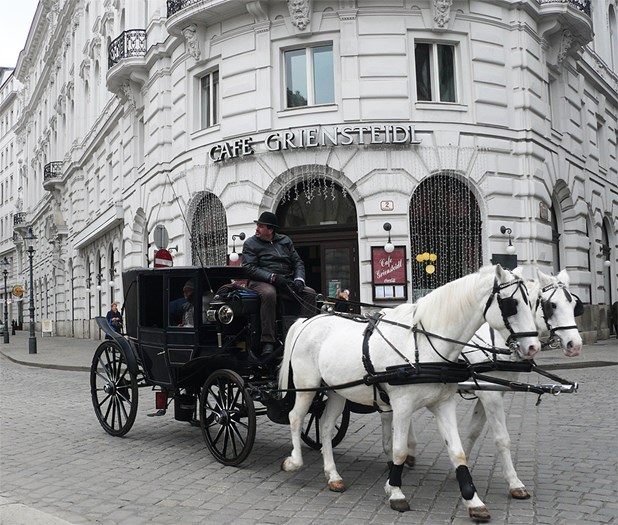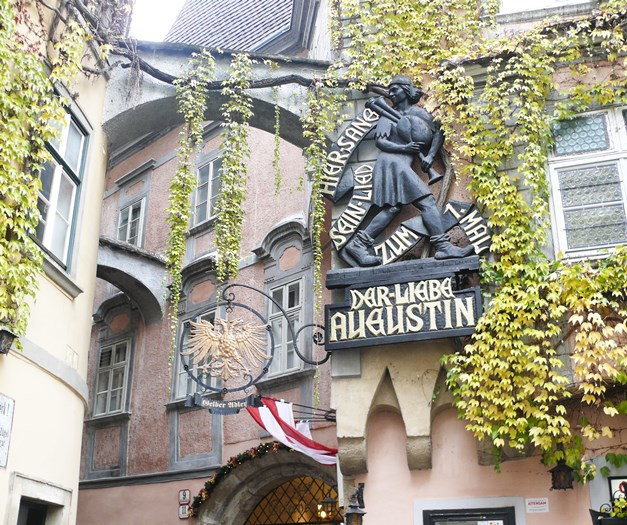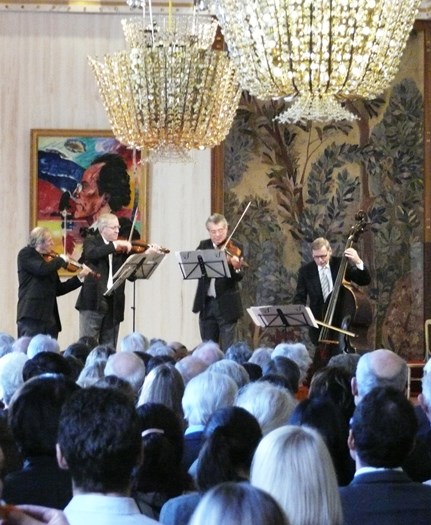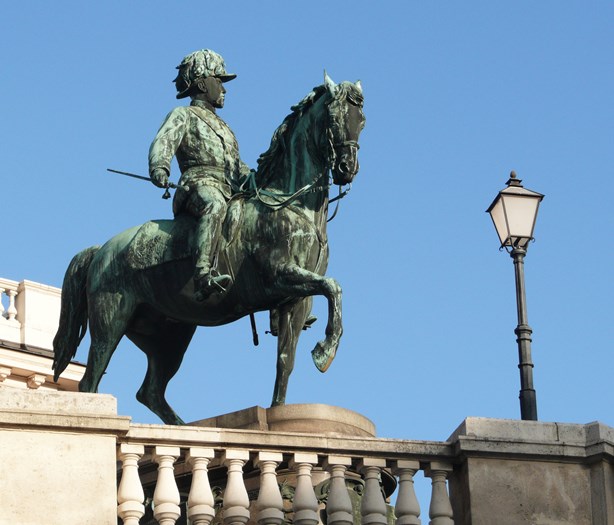VIENNA - A chill air seeps through the cracks in the massive wooden doors that hang at St. Stephen’s Cathedral, but the assembled inside are being warmed by the angelic voices and heavenly music being played at the evening concert.
Lovers hold hands and cuddle in ancient pews that date back to 1147, when St. Stephen’s was consecrated, while the orchestra performs music written by Mozart, Brahms, Schubert, Strauss and other great Austrian composers. (It was here that Mozart gave free concerts when he lived, from 1784 to 1787, in the Camesina House around the corner from St. Stephen’s).
A lovely young woman, her hair the colour of the Golden Fleece and a voice as sweet as a Viennese cake, brings us to our feet with a spectacular finale — a resounding rendition of Schubert’s Ave Maria.
Another magical evening in Vienna, where I stumble upon the St. Stephen’s concert quite by accident while exploring the Old Town, ends with me sitting in the Café Frauenhuber, the city’s oldest and most famous kaffeehaus, sipping a brew and devouring a huge slice of strudel. (Frauenhuber’s is the place composers like Mozart and Beethoven would hang out after concerts and my server tells me it was in this coffee house where Mozart made his last public appearance on March 4, 1791).
Vienna has so many secrets, but like any mysterious beauty she doesn’t surrender them easily. It’s up to visitors to get off the well-worn tourist path and explore her old narrow streets and alleys, talk to locals, open doors and poke your head inside ancient buildings if you want to experience this city’s true inner beauty.

Above: Old Vienna is always close at hand with carriage rides like this bringing back memories of regal Austria.
On the surface, Vienna ranks among Europe’s most beautiful cities — it’s certainly the most sophisticated city on the Continent — and its architecture, grand music halls, electric shopping streets, remarkable restaurants and spectacular museums are the envy of every other city.
I could spend a week just exploring Vienna’s Museum Quarter. But if I hadn’t opened a door in the massive Kunsthistorisches (Art History) Museum and seen workmen putting the final touches on an upcoming exhibition, I never would have known that the museum is getting ready to welcome back the Kunstkammer after a 10-year absence.
The Kunstkammer is a spectacular Imperial Family collection of gold, bronze, ivory and wooden artefacts and includes exotic elements like ostrich eggs, the horn of the legendary unicorn and Benvenuto Cellini’s Saliera, an exquisite golden sculpture designed to hold table salt. The Kunstkammer, which officially opened in February and runs throughout 2013, will be the most sought–after ticket this year in Vienna.
Another secret uncovered.
Then, after climbing a series of steep pedestrian steps in the 1st District, I come upon a handsome wooden building that captures my attention because its façade stands out from the brick and stone structures surrounding it.
When I open the door and stick my head inside the entrance, a lady welcomes me with a short history lesson of the “Heumuhle auf der Wieden — the oldest preserved house in Vienna.”

Above: The Heumuhle auf der Wieden is the oldest preserved house in Vienna.
“The house was built in the 13th century and started out as a mill and later became a bakery and then a hospital,” says the cleaning lady, who goes on to say that most Viennese “couldn’t tell you how to find the Heumuhle auf der Wieden.”
But I did!
While exploring the Danube Canal area, where I stay during my visit at the chic Sofitel Hotel, I learn from local restauranteurs that this is Judenplatz, the heart of the city’s old Jewish ghetto from the 13th to the 15th centuries.
Where once hundreds of thousands of Jews lived prior to the Holocaust, now just a few thousand remain and the district is being transformed with an injection of modern glass and steel towers which, oddly enough, blend in beautifully with the Baroque and 19th century architecture featured here.
While walking around the picturesque neighbourhood, I come upon lovely Ruprechtskirche, the oldest church in Vienna whose history dates back to 740.
In one of the trendy new coffee shops that this area is now becoming famous for, I learn that it was here that the potato crisp was introduced, around 1920.
When I walk across a bridge over the Danube Canal, I come upon the boat terminal from where people can take a high-speed catamaran linking Vienna with Bratislava in Slovakia. In the terminal there’s a modern restaurant called Motto am Fluss and the meal I have there is a gastronomic delight.
I can’t come to Vienna and not have a schnitzel. The last time here I ate at Figlmüller, a Vienna landmark which has become one of the city’s hottest tourist attractions because of the size and tenderness of its schnitzel.
This time I want to uncover a new schnitzel experience and that brings me to the front door of Plachuttas Gasthaus bei der Oper, right behind the city’s famed State Opera House. Plachuttas’ veal schnitzel is every bit as good as the one served at Figlmüller but the lack of tourists here makes for a far more intimate dining experience.
Inspired by the State Opera House’s majestic design, I return to the area the next day and see lots of people waiting to enter the grand building. When I ask a young man if there’s a performance taking place, he tells me that each weekend members of the world-famous Vienna Philharmonic play chamber music in one of the anterooms off the main stage.
Next thing I know, I’m sitting with about 100 others listening to a quartet play works of Joseph Haydn, Franz Schubert, Werner Pichner, Johann Strauss and Johannes Brahms.
I’ve found classical music heaven!


Left: Tourists are treated to afternoon shows at Vienna's Opera House. Right: Regal statues are everywhere.
Next to schnitzel restaurants, sausage stands are the most popular eating establishments in Vienna and right outside the Opera House, in the shadow of the Albertina Museum in Albertinaplatz, I discover the city’s most famous sausage stand where the owner serves up many varieties, all of which snap when you bite into them.
After devouring a few, I continue my search to find more of Vienna’s hidden secrets and come across Mozart’s hidden grave; the secret stables of the Lipizzaner Stallions; and some more houses Mozart called home when he lived in Vienna — he actually lived in about a dozen, usually moving to avoid the landlord.
The good news is that Vienna has still not given up all her secrets to me, so I’ll just have to come back.